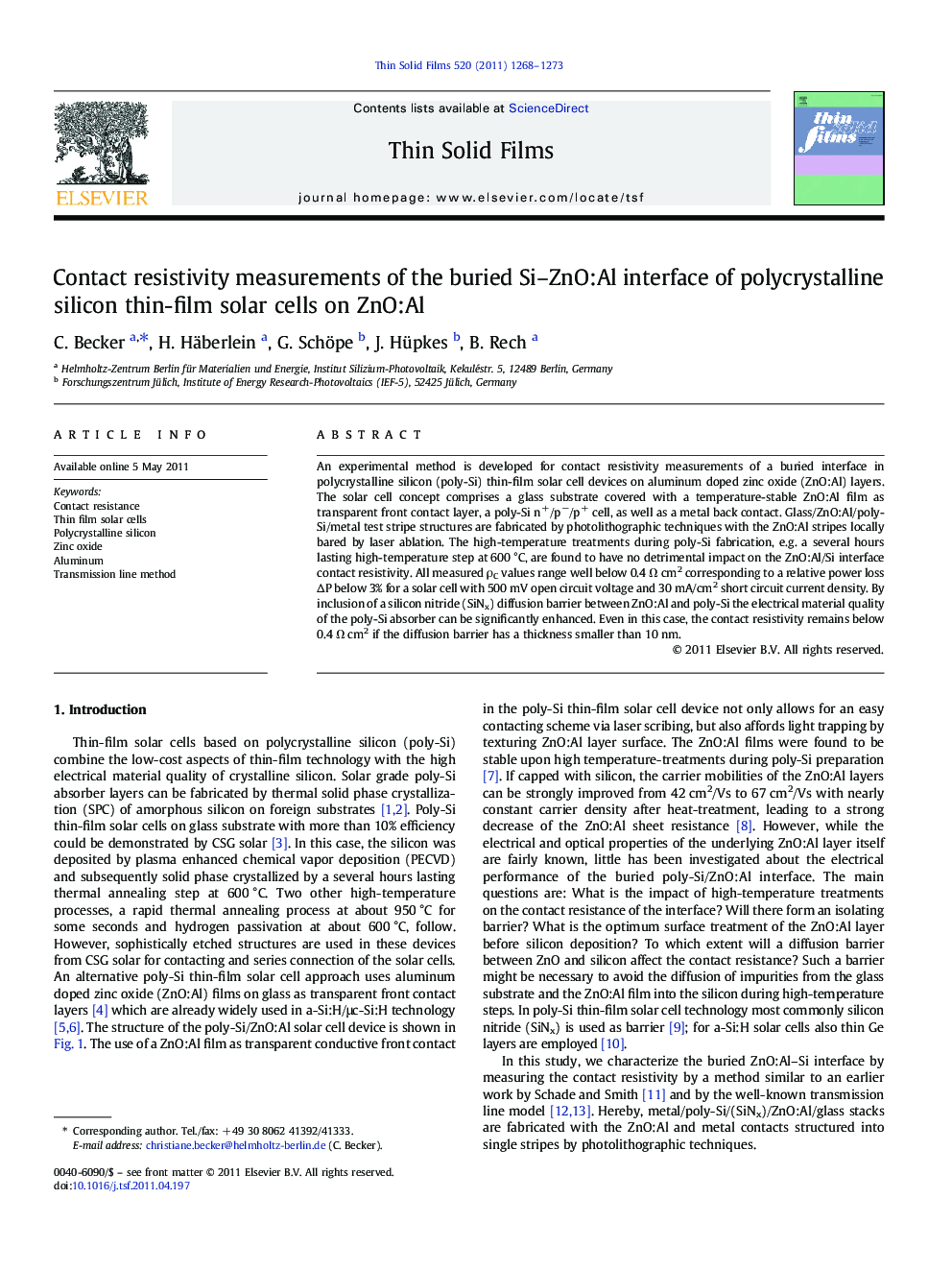| Article ID | Journal | Published Year | Pages | File Type |
|---|---|---|---|---|
| 1667592 | Thin Solid Films | 2011 | 6 Pages |
Abstract
An experimental method is developed for contact resistivity measurements of a buried interface in polycrystalline silicon (poly-Si) thin-film solar cell devices on aluminum doped zinc oxide (ZnO:Al) layers. The solar cell concept comprises a glass substrate covered with a temperature-stable ZnO:Al film as transparent front contact layer, a poly-Si n+/pâ/p+ cell, as well as a metal back contact. Glass/ZnO:Al/poly-Si/metal test stripe structures are fabricated by photolithographic techniques with the ZnO:Al stripes locally bared by laser ablation. The high-temperature treatments during poly-Si fabrication, e.g. a several hours lasting high-temperature step at 600 °C, are found to have no detrimental impact on the ZnO:Al/Si interface contact resistivity. All measured ÏC values range well below 0.4 Ω cm2 corresponding to a relative power loss ÎP below 3% for a solar cell with 500 mV open circuit voltage and 30 mA/cm2 short circuit current density. By inclusion of a silicon nitride (SiNx) diffusion barrier between ZnO:Al and poly-Si the electrical material quality of the poly-Si absorber can be significantly enhanced. Even in this case, the contact resistivity remains below 0.4 Ω cm2 if the diffusion barrier has a thickness smaller than 10 nm.
Keywords
Related Topics
Physical Sciences and Engineering
Materials Science
Nanotechnology
Authors
C. Becker, H. Häberlein, G. Schöpe, J. Hüpkes, B. Rech,
